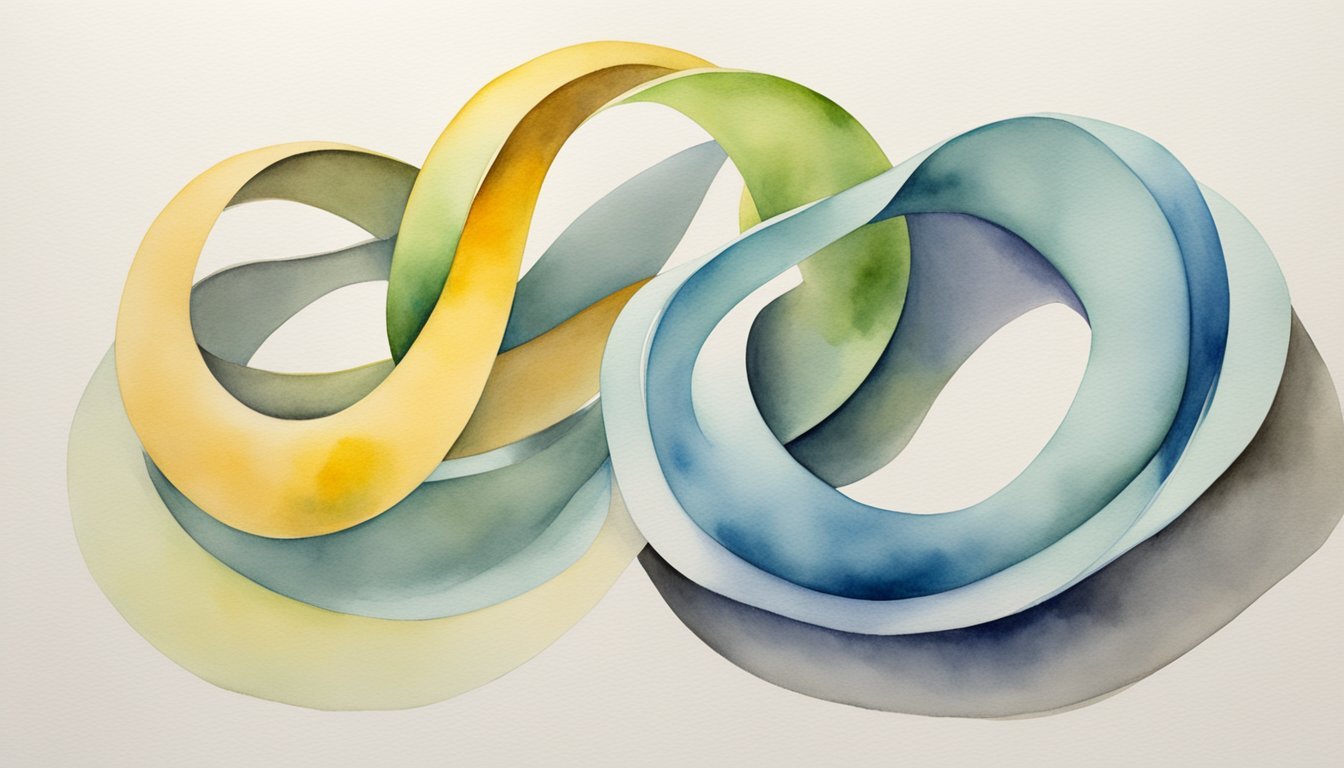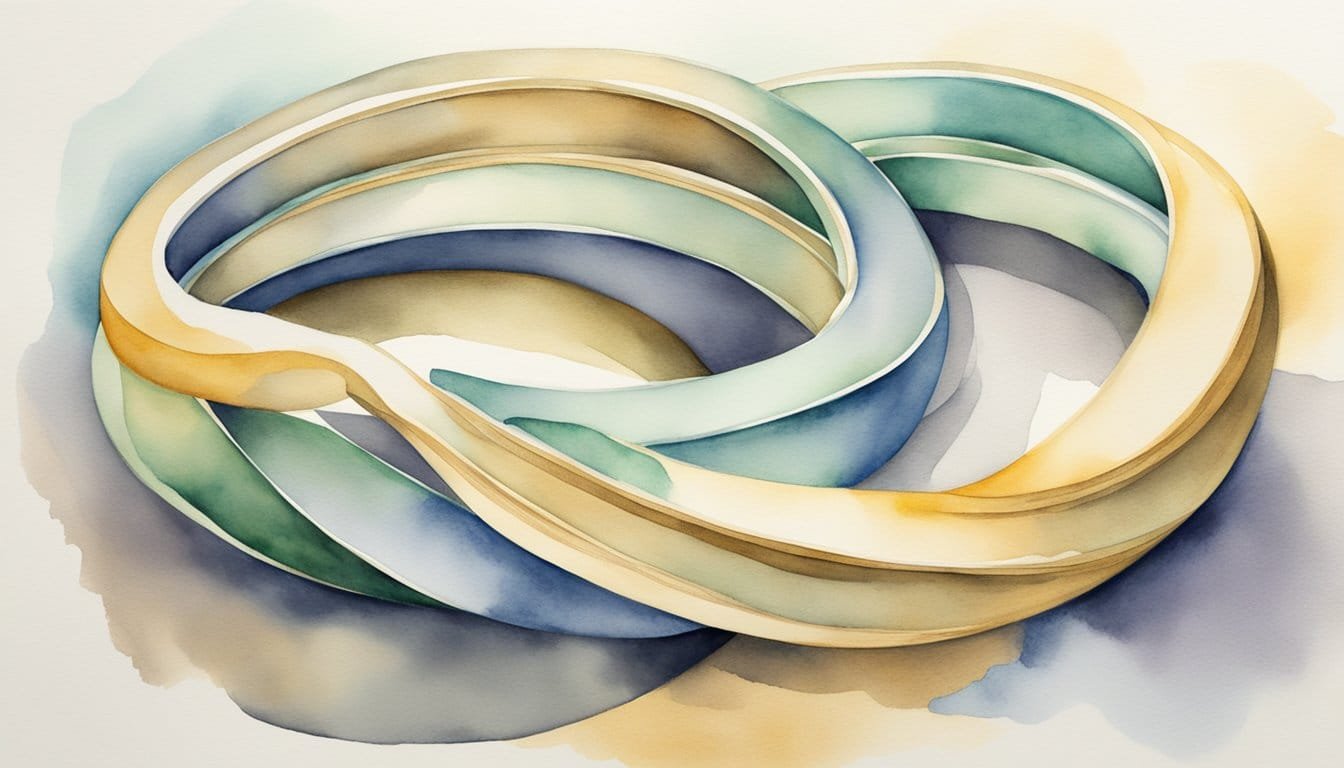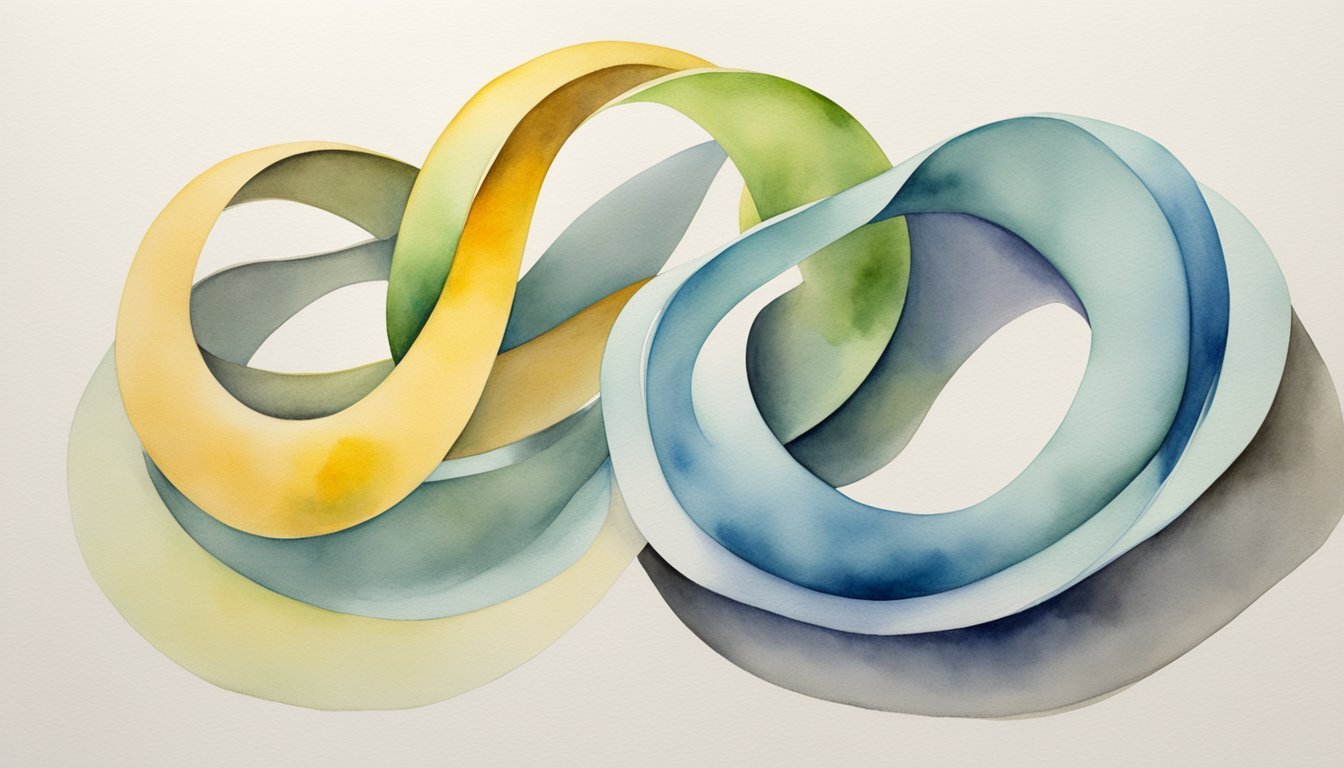Origins and Mathematical Foundations
The Möbius strip, a fascinating object with only one side and one edge, was discovered independently by two German mathematicians in 1858. This peculiar form has intrigued enthusiasts and scholars alike, embedding itself as a classical example in the captivating world of topology.
Historical Context
In 1858, the Möbius strip was first described almost simultaneously by two German mathematicians, August Ferdinand Möbius and Johann Benedict Listing. Möbius, predominantly recognized for his work in number theory, certainly did not anticipate how his name would become associated with a twisted strip of paper.
Basic Properties
The defining characteristic of a Möbius strip is that it’s a surface with only one side and one edge. By taking a strip of paper, giving it a half-twist, and joining the ends, one creates a Möbius strip. This enigmatic structure challenges our conventional understanding of ‘inside’ and ‘outside’.
Topology and Geometry
In terms of topology, the Möbius strip falls under the umbrella of non-orientable surfaces, which means that it lacks a distinct “left” or “right” side. Its intrinsic property of having a single surface exposes the inherent beauty of topology, a branch of mathematics that studies the properties of space that are preserved under continuous deformations. The Möbius strip is also tied to other areas, such as knot theory and the concept of the Euler characteristic, a topological invariant that describes a surface’s shape or structure regardless of the way it is bent or stretched.
Physical and Conceptual Aspects

The Möbius strip, a deceptively simple twisted loop, embodies a world where science and imagination merge. This strip, which challenges everyday notions of “sides” and “edges,” leads to astonishing revelations in both theoretical and applied domains.
Creating a Möbius Strip
To create a Möbius strip, take a strip of paper, give it a half-twist, and then join the ends of the strip together to form a loop. The half-twist is critical: it transforms a two-sided rectangle of paper into a one-sided object without boundaries—a nonorientable surface. It’s a simple experiment that requires only scissors, tape, and paper, yet it opens doorways into understanding complex concepts in topology, a branch of mathematics concerned with the properties of space that are preserved under continuous transformations.
Intriguing Properties
A Möbius strip has several fascinating properties: its one-sidedness and the fact that it contains only one edge. If you were to take a pencil and draw a line along the center of a Möbius strip, you’d eventually return to the starting point, having covered the entire “surface” without ever lifting the pencil. If you cut along this line, instead of two separate strips, you’d create a larger Möbius strip, demonstrating its nonorientable nature.
Scientific and Artistic Explorations
The Möbius strip isn’t just a mathematical curiosity; it has practical implications in various fields including engineering, chemistry, and even art. Conveyor belts designed as Möbius strips wear more evenly, since there is only one side. In chemistry, the concept of a Möbius strip helps scientists understand certain molecular structures that have similar one-sided properties. Artists often utilize the Möbius form to explore concepts related to infinity, continuity, and form. Mathematical explorations have led to the discovery of related structures such as Klein bottles and real projective planes, each with their unique properties and extending the conversation about dimensions and the fabric of reality.
Cultural and Practical Influences

The Möbius strip, an intriguing mathematical shape, has fascinated artists and scientists alike. It has not only captured the imagination within the arts but also has proven to hold numerous applications in various scientific fields.
Mobius Strip in Art and Design
Art that deals with the Möbius strip often plays on its magical paradox of having only one side and one edge. Artists like M.C. Escher are renowned for incorporating this theme into their work, such as his famous piece “Möbius Strip II,” where ants march along the endless one-sided surface. The piece reflects Escher’s interest in infinity and allows viewers to ponder the complexity of what at first glance may seem simple. The Möbius strip also emerges in design elements, offering a visual representation of the infinite, a concept that both fascinates and inspires in the realm of art and design.
Applied Use Cases
Practically, the Möbius strip has applications that extend into the field of applied mathematics and engineering. It’s been used to create more resilient conveyor belts and continuous-loop recording tapes, where the twist in the strip allows for double the playing time. Topologist investigations, like those found within the pages of “Geometriae Dedicata”, have uncovered that concepts derived from studying Möbius bands can inform technology, such as the creation of paradromic rings. Additionally, the Möbius concept has influenced engineers designing objects like the Klein bottle, a three-dimensional manifold with properties related to the Möbius strip. In the scientific community, researchers like Fields Medal winner Akshay Venkatesh explore the boundaries of geometric understanding, where Möbius strips present intriguing questions holding profound implications across various scientific disciplines.

